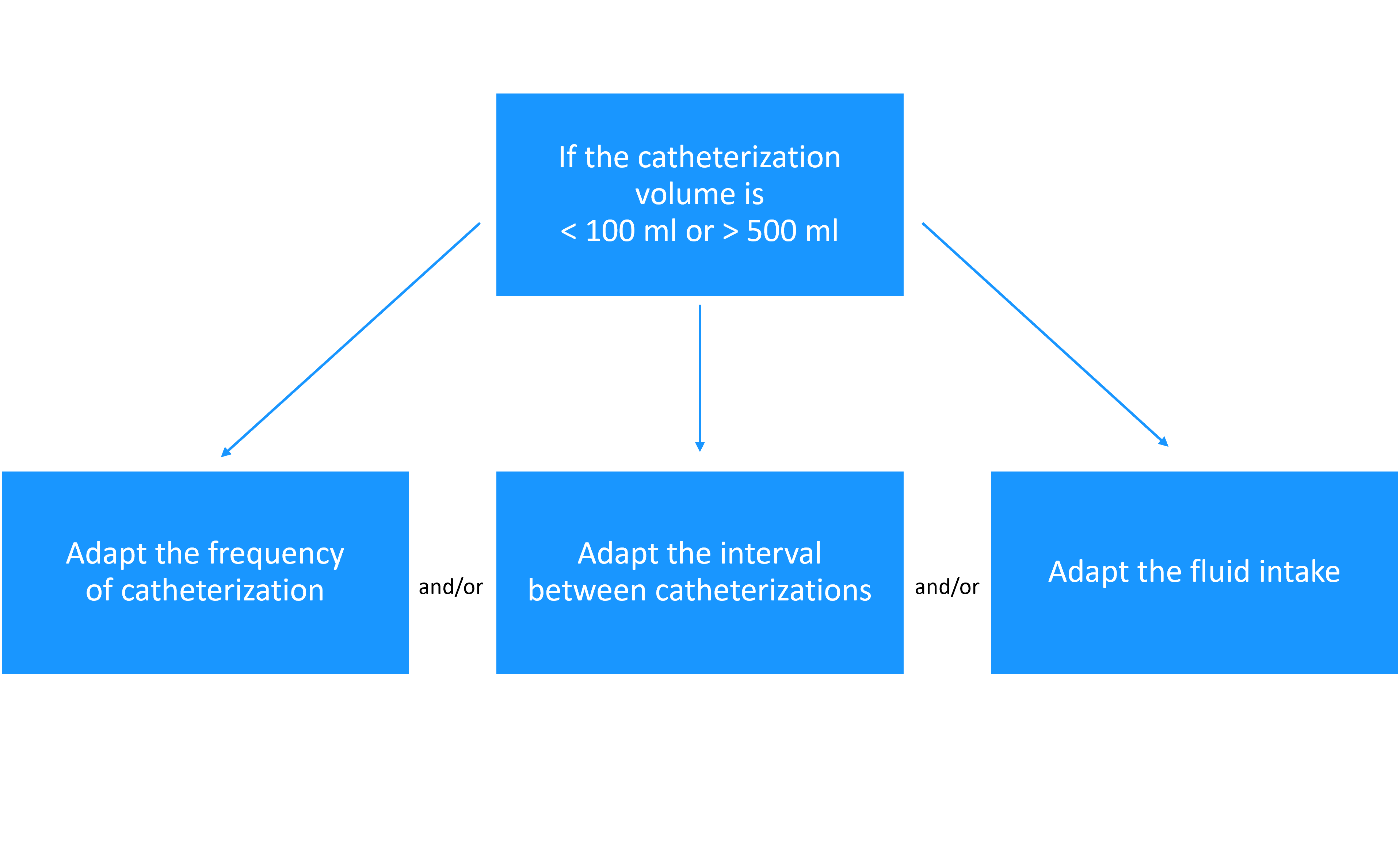
IC requires a high level of patient commitment and some people may stop the therapy, particularly if under stress and other illness to deal with. Patients need to be well motivated and require an appropriate level of manual dexterity.
Patient selection
Generally, it can be assumed that if a patient can write and feed themselves, they have the dexterity to catheterize. Disabilities such as blindness, tremor, or mental disability should not preclude people from performing IC, they may just require more support and training. Where a person is unable to perform self-catheterization independently a partner or carer can be taught. Most people who start IC have no problem handling it. but sometimes if a person experiences a UTI they may express a wish to discontinue the therapy.
Females can have difficulty locating the urethral opening, but the use of a mirror and the appropriate position and support can help.
There are many aids available to help patients achieve independence with IC such as handles/grips to help clients who have problems with manual dexterity, or leg spreaders to help female patients who have leg spasms.
Patient Education
Education and training is crucial to help the patient understand how to perform Intermittent Catheterization successfully. Many people have limited knowledge of their body functions. To ensure that the patient follows the recommended treatment, education should focus on improving the patient’s understanding of his / her body functions, and the medical reason behind needing to do IC.
Teaching and supporting a patient to perform IC should include:
- A discussion with the patient regarding their individual bladder dysfunction and reasons for intermittent-catheterization
- Discussion of anatomy and identification of urethral orifice
- ISC technique includes appropriate positioning
- Hygiene needs including handwashing and cleansing of genitalia
- The use of catheters: including, storage and disposal
- Single-use catheters should be disposed of after one use
- All catheters should be stored flat, and away from extremes of temperature
- Possible problems and solutions.
- Sexual relationships
- Avoidance of constipation and dietary advice
- Traveling with catheters
- How to obtain supplies
- Follow-up visit arrangements
Patients and caregivers need to be assessed with regard to:
- General health status
- Knowledge of the urinary tract
- Ability to understand the information
- Motivation and emotional readiness
- Availability to perform the procedure
- Ability to perform the skill
- Concordance
- Need for psychological support
Determining frequency of catheterization
The patient needs to understand the importance of keeping the catheterized volume low, following good hygiene methods, and the regularity of catheterization required. One way to do this is to explain the correlation between UTIs with volume and by keeping the volume low the patient decreases the risk of over-distention of the bladder, which may destroy bladder compliance. A bladder that has been exposed to over-distention may increase the risk of recurrent UTIs and urinary incontinence in the future.
When initiating IC, observe bladder emptying and residual volume (including retention) to measure the urine volume drained and to determine the frequency of IC. A voiding diary can be helpful.
Residual urine can be measured using a portable ultrasound bladder scanner in the person's home or clinic (where a scanner is not available a catheter can be passed). Residual urine should not be less than 100 ml as catheterization would be required too frequently. To determine the frequency, patients should measure voided volumes and residual urine at each catheterization.
If the person cannot pass ANY urine independently, will usually require IC 4 to 6 times daily to ensure their bladder volume of urine doesn’t exceed 400 ml. It is important to have an understanding of the correlation of IC with fluid intake. For example, if the person has an increased fluid intake it is important to catheterize more often.
